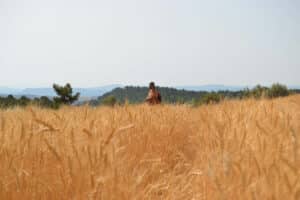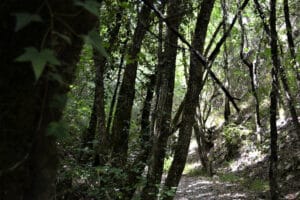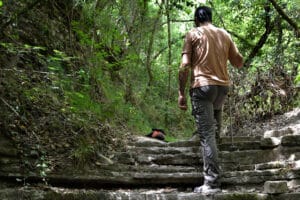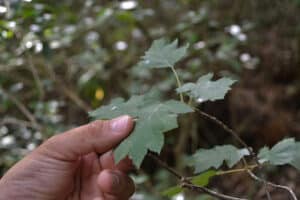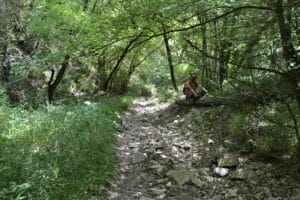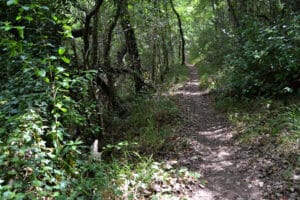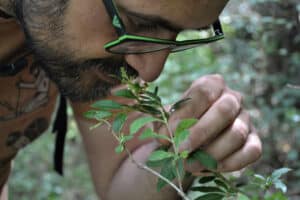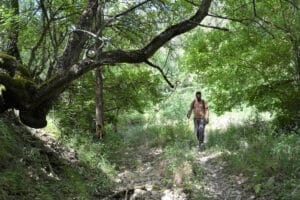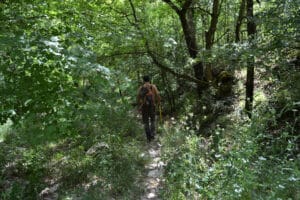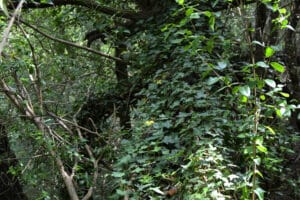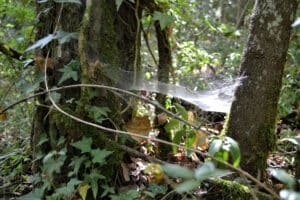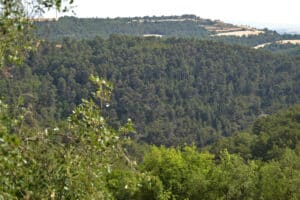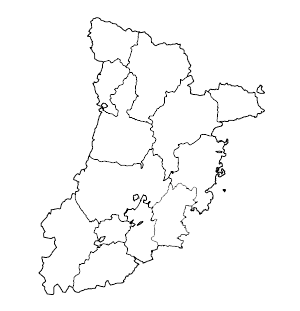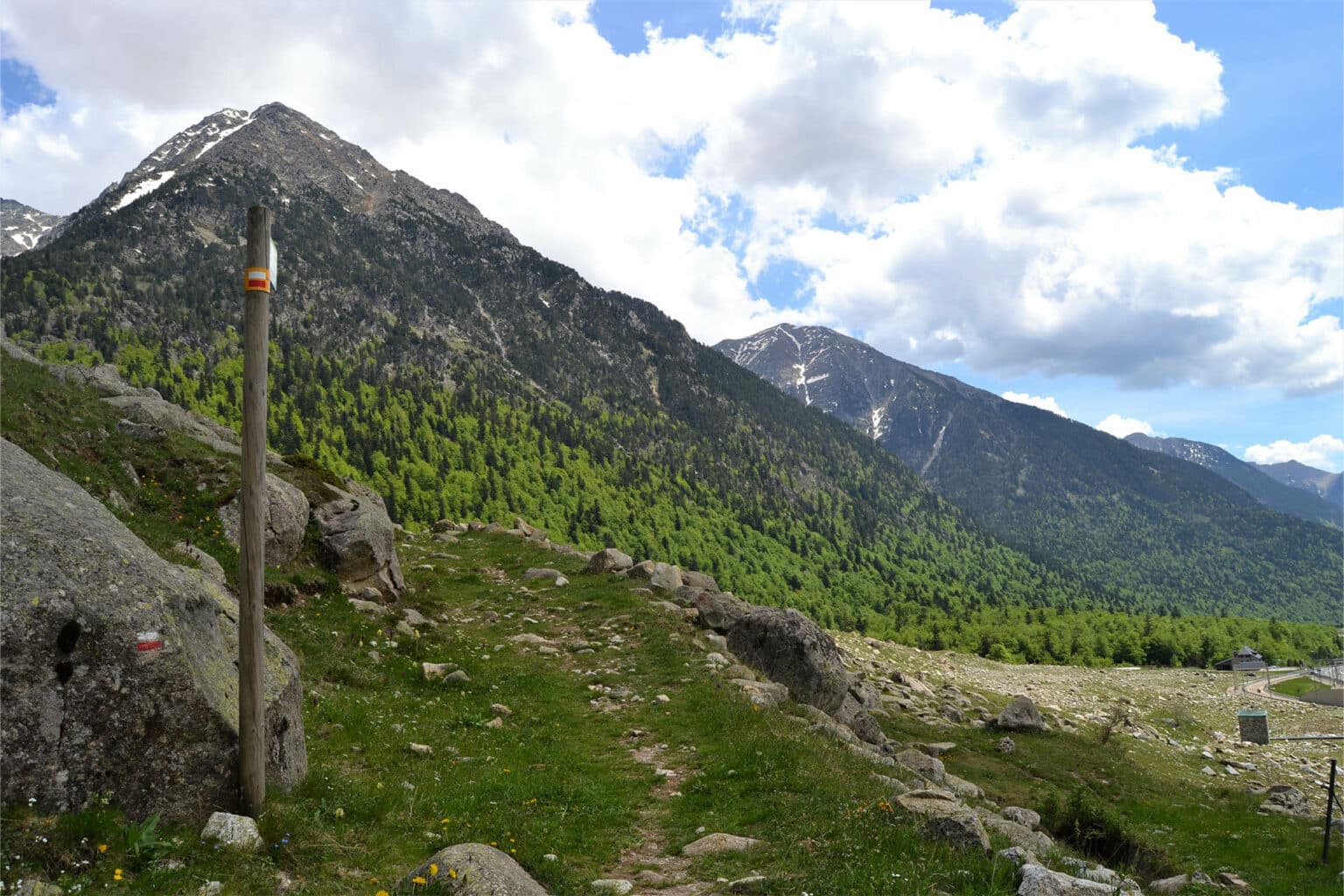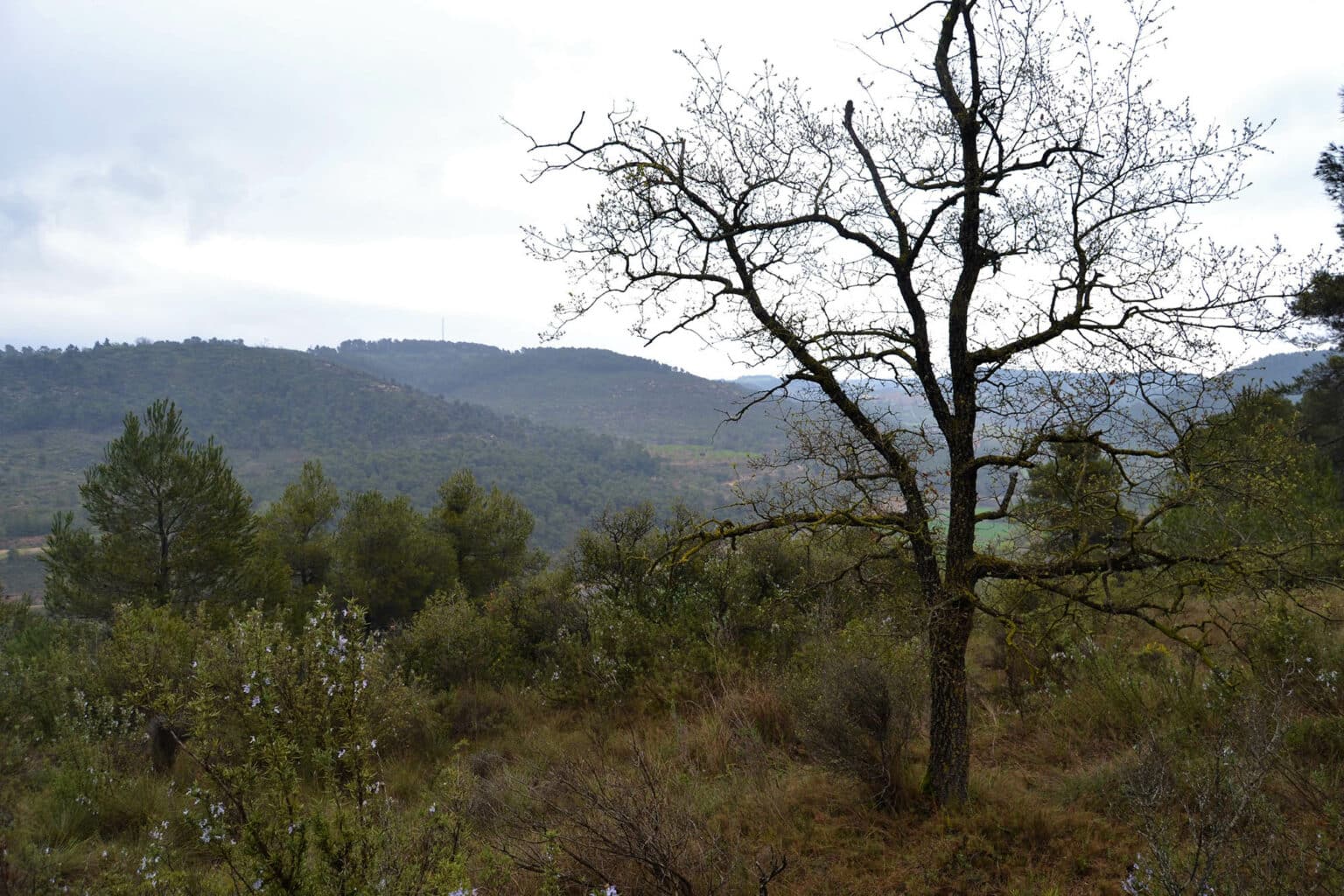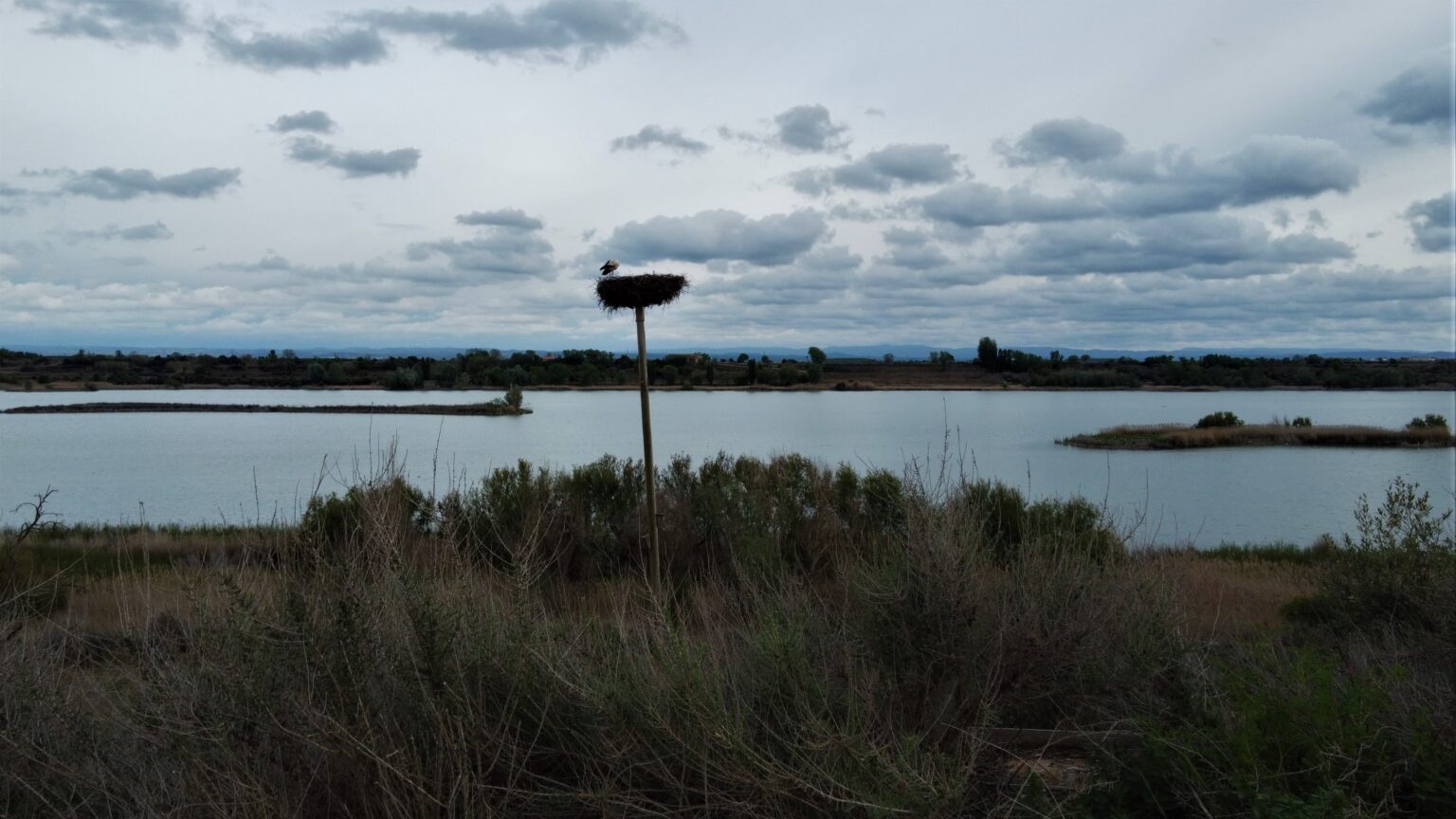FOREST BATHS
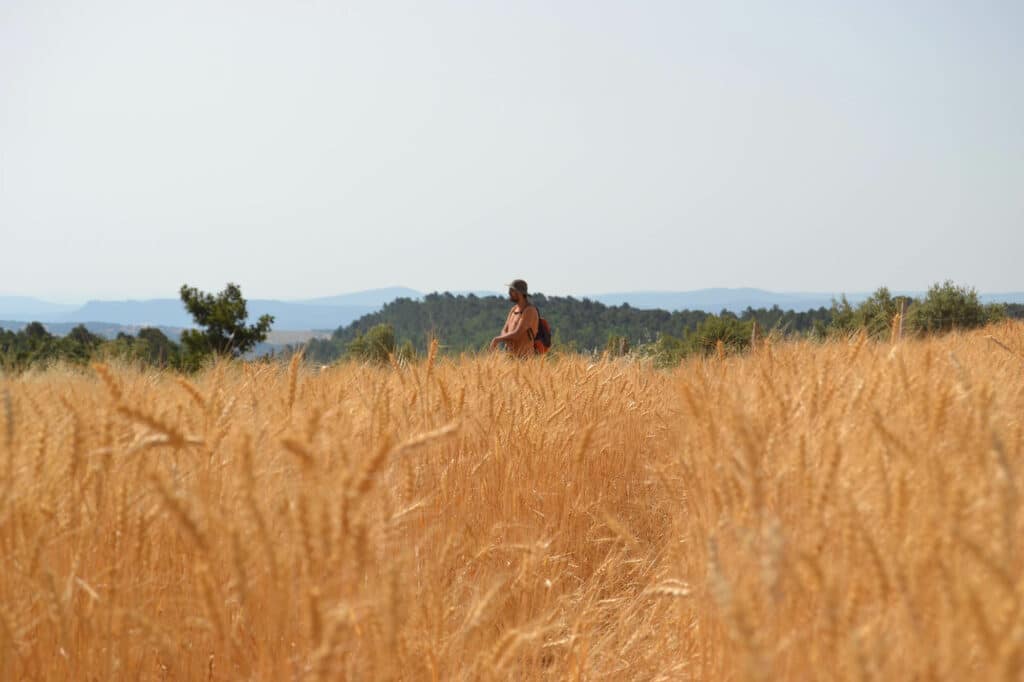
The large hidden forest of Les Obagues de Sant Guim
Known for its cereal and crop plains, La Segarra stands out for its undulating plateau and mid-mountain environment. The forest is hidden amongst large expanses of cereals and is highly appreciated by both the local population and visitors, above all in the summer period, when the temperatures are higher and it is warmer. The climate of this area is generally characterised as dry, continental Mediterranean, with little precipitation, hot summers and intense frosts in winter, which cause drastic changes to its landscape. In this territory of contrasts, it is possible to enjoy incredible shade that will hide you from the summer heat and to observe impressive frosts in winter, which cover the landscape with a shining white blanket. Although not a comarca (local district) of abundant water, it is possible to find several significant watercourses here, including the rivers Sió, Ondara and Llobregós.
In this proposal, we head towards Alta Segarra, where the vegetation of the dryland fields makes their colour change totally, from one time of the year to another. The intense green of the growing cereals is transformed to the golden yellow of ripe cereals as harvesttime approaches. It is not at all surprising that so many painters have sought to capture the image of this scenery, regardless of their style and skill.
Sant Guim de Freixenet is located on the highest part of the Central Plateau of La Segarra, and it is here that it is necessary to arrive to start the journey to what are known as Les Obagues (the shaded areas) de Sant Guim, which include the Obagues of Amorós, La Tallada and Les Llobetons. They are, as a group, in an ideal area for forest bathing. From Sant Guim, it is necessary to go to La Torre de Vilalta (Vilalta castle), heading towards the Turó del Magre wind farm, which can be found by following the B-100. At the height of the roundabout at La Tallada, near Cal Casanova Solà, it is possible to take the Camí de les Planes and then turn south-eastwards, along the Camí de les Vilaltes. Before reaching the Turó del Magre, and having passed the water deposit, you should turn to the left, with La Torre now in view, up on top of a small hill.
It is possible to leave your car in any of the wide spaces around the wind turbines near La Torre de Vilalta. To the east of La Torre de Vilalta, there is a crossroads which is in front of a plantation of evergreen oak. At this point, it is necessary to take the path that heads northwards and which initially gradually descends at the beginning of Les Obagues, with Sant Guim and Amorós in sight on the plateau, on the other side of the valley (but take care, as there is no signage). First, you must pass some cereal fields, which you will skirt to your left. You must then continue along the path as it runs downhill and into the forest. The route then path turns into a footpath which will take you to the shaded interior of the forest, where it connects with another footpath that follows the Rasa de Comescaus. From there, you will turn eastwards (off to your right) and must follow a path that runs parallel to the Rasa and as far as the Font de la Torre spring. It is then 1.5 kilometres from La Torre de Vilalta to the Font de la Torre spring, with a net variation in altitude of 130 metres. Take care because there is practically no signage along the way.
The space for forest bathing
When you follow the path, you will soon enter a micro-universe which is well-protected from the wind. As previously mentioned, the contrast with the plateau is surprising. The frosty fogs produce tremendously wintery and cold landscapes, while summers are very dry and cold in this area. In this part of the Obagues, there is a very leafy forest and the path will take you into an area with a mixture of species that are typically associated with shady, humid environments and with species from thermophilic humid places (which prefer mild winter conditions). As you go deeper into the forest, you will be surprised by the quantity and wealth of the vegetation. There are evergreen and deciduous trees which form a gradient of red, brown and intense shiny-yellow colours in autumn. Amongst the deciduous species found here, it is relevant to highlight the Montpellier maples (Acer monspessulanum), field maples (Acer campestre) and oak trees (Quercus faginea and Q. x cerrioides) as well as other species such as the checker tree (Sorbus torminalis) which, like a good whitebeam, sees its leaves transformed into splendid reddish tones in autumn, and the service tree (Sorbus domestica). This last tree has compound leaves and edible fruits that ripen at the end of summer. In the blossom season, it produces small flowers which are reminiscent of those of apple and pear trees, and it is a member of the rosacea family. In the more shaded areas, it is also possible to find four types of pine tree: the black pine (Pinus nigra salzmanii), the Scots pine (Pinus sylvestris), the Aleppo pine (Pinus halepensis), and the umbrella pine (Pinus pinea), as well as the holm oak (Quercus ilex) and the ballota oak (Quercus rotundifolia). There is therefore a very interesting mix of deciduous and evergreen species which are associated with temperate and Mediterranean climates.
Shrubs, such as the mock privet (Phillyrea latifolia) and buckthorn, abound along much of the route, as do the hawthorn (Crataegus monogyna), blackthorn (Prunus spinosa) and snowy mespilus (Amelanchier ovalis), amongst other species. There are two shrubs that particularly stand out for their aromas in the flowering period: the wild privet (Ligustrum vulgare) and the Etruscan honeysuckle (Lonicera etrusca), which can flood the forest with the perfume of their nectar for as long as a fortnight. When it is not the flowering season, even though the aroma is not as intense, it is still possible smell it if you get close enough to these plants. Similarly, according to their flowering season, it is possible to find carpets of purple gromwell (Lithospermum purpurocaeruleum), with its characteristic bluish flowers, and also the mature black fruits of the spurge-laurel (Daphne laureola). It is also striking to see the greenness of the mosses and liverworts, which depending on the humidity of the area. These are usually abundant on the trunks and bark of trees. Even with the limited humidity of the driest periods of the year, they can also be found in shady parts of the forest. Different types of ivy (Hedera helix) climb up to the canopies of many trees and form part of the undergrowth carpets, along with some mushrooms, in autumn. This is particularly true if it has rained sufficiently. They then add to the previously mentioned aromas the unmistakable smell of fungi.
Following the small path, you will reach the bottom of Les Obagues where the Font de la Torre spring is located. It is a type of pit spring, dug out of natural rock when searching looking for the deep thread of water. It was later finished by the addition of a stone vault, and some steps or a ramp, to provide easier access to the water to people and also to animals. It is a point of reference and something quite unique, which has a very wild air to it. At this point, there are two options: it is possible return along the same path along which you came, or to extend your walk by following a larger circular route. If you follow the normal variant, it is necessary to go back along the path. However, for its beauty, it is recommended to continue along the ravine for another 250 metres (paying careful attention, because there is no signage). In this case, it is necessary to continue through the Barranc de la Torre where, as you advance along the stream, it is possible to appreciate the spectacular architecture that the water has created when passing over the rock: it has left tiers of surprising forms and an atmosphere which is conserved by the gallery of trees, which is spectacular in autumn. The bottom of the ravine hosts an intermittent stream of water, red by springs which often flow from the rock face. It can also fill with water if there is a heavy downpour, but this is not very common. After about 500 metres, it will be necessary to take a path that branches off sharply to the left (heading towards the east) and then continue along the path that is signposted as the Les Obagues route. After about 150 metres, you must then take a recognisable footpath that has a gradual ascent. This will take you up to the first path and then on towards the Torre de Vilalta sector.
In summary, the Les Obagues forests are unique woodlands that are typical of the La Segarra plateau. Here, there is a mixture of oak groves, temperate climate mountain pine forests, and Mediterranean holm oaks. This makes for a very special communion and one which invites people to come and explore and experiment with different sensations.
